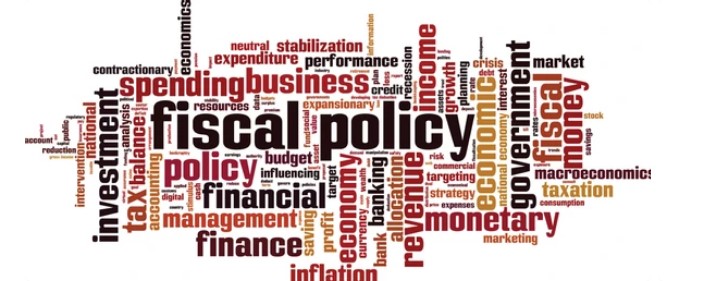As economies oscillate between periods of expansion and contraction, governments and central banks often apply different policies to manage this ebb and flow. However, certain measures, particularly contractionary policies, can inadvertently hamper economic growth. Here, we will discussed “which best explains how contractionary policies can hamper economic growth” in details.
What Are Contractionary Policies?

At the heart of economic cycles, we encounter contractionary policies. Essentially, these are strategies implemented by the government or the central bank to reduce the money supply and ultimately slow economic growth. They mainly manifest as fiscal or monetary policies, encompassing tactics like increased interest rates, reduced government spending, or heightened taxes.
The Intricacies of Contractionary Monetary Policy

Monetary policy refers to the tactics employed by a country’s central bank to control the money supply. When contractionary, the intention is to slow economic growth, primarily to control inflation. This is often achieved through higher interest rates, reducing the amount of money circulating in the economy.
However, these policies can have a detrimental effect on the economy’s growth trajectory. By increasing interest rates, borrowing becomes more expensive. As a result, consumers may reduce their spending, and businesses might scale back their investments, leading to a slowdown in economic growth.
Understanding Contractionary Fiscal Policy
Fiscal policies, on the other hand, refer to the use of government revenue generation (taxation) and expenditure (spending) to influence the economy. In a contractionary fiscal environment, the government might decrease its spending, increase taxes, or both. These actions typically aim to control the budget deficit or curb inflation.
Unfortunately, reduced government spending can have a significant impact on economic growth. Government expenditure often fuels business activities, creating jobs and boosting demand. Cutting back on this spending can lead to job losses, decreased aggregate demand, and ultimately, a slowdown in economic growth.
The ‘Crowding Out’ Phenomenon
An often-overlooked aspect of contractionary policies is the crowding out effect. This occurs when increased interest rates make borrowing more expensive for businesses, leading to decreased investment. Government borrowing can compound this effect, reducing the funds available for private investment, which is a vital contributor to economic growth.
The Consequences of Tight Monetary Policy on Economic Growth

The repercussions of contractionary monetary policies extend far beyond reducing consumer spending. By making borrowing more expensive, businesses may face difficulties expanding, investing, and even maintaining operations. This can lead to job losses, reduced consumer spending, and a slowdown in overall economic growth.
Alternative Approaches to Managing Economic Growth
Given the potential negative impact of contractionary policies on economic growth, alternatives must be considered. One such option is expansionary policy, which focuses on increasing the money supply, thereby promoting spending and investment.
However, it’s crucial to strike a balance. Overuse of expansionary policies can lead to high inflation rates, diminishing the value of money and potentially destabilizing the economy. As such, policymakers must employ a delicate balancing act, leveraging both expansionary and contractionary policies as needed to ensure stable, sustainable growth.
The Impact of Contractionary Policies on Different Sectors
Contrary to what some may believe, contractionary policies do not impact all sectors of the economy equally. For instance, industries that rely heavily on consumer spending, such as retail, may be hit hardest during periods of reduced spending. On the other hand, sectors less dependent on consumer behavior, like utilities, may be less affected.
Simultaneously, businesses that rely on investment or loans for expansion might struggle during periods of increased interest rates, as these policies make borrowing more expensive. This could impact sectors like real estate and construction, where large capital outlays are often financed through borrowing.
Conversely, sectors like technology, which can thrive with minimal capital investment, might be less affected. However, even within these sectors, contractionary policies could still influence the overall business environment, leading to a slower pace of innovation and growth.
Long-Term Consequences of Prolonged Contractionary Policies
While contractionary policies can serve as useful tools to control inflation and manage economic cycles, their long-term overuse can potentially lead to detrimental effects. Prolonged periods of reduced consumer spending and decreased investment can lead to slower economic growth. This can result in a cyclical downturn, with reduced business activity leading to job losses, further decreasing consumer spending and investment.
Moreover, prolonged contractionary policies can also impact societal well-being. For instance, decreased government spending could lead to cuts in essential services like healthcare, education, and infrastructure, directly affecting people’s quality of life.
In addition, the persistence of high interest rates could increase the burden of debt for both businesses and individuals, leading to increased financial stress and potentially fostering an environment for financial crises.
Historical Examples of Contractionary Policies and their Effects on Economic Growth
Understanding the past can provide valuable insights for the present and future. One historical example of contractionary policies is the “Volcker Shock” in the United States in the 1980s. To combat soaring inflation, then-Federal Reserve Chairman Paul Volcker dramatically raised interest rates, reaching levels as high as 20%. While these measures did successfully curb inflation, they also triggered a severe recession.
Another instance can be found in the European Union’s response to the 2008 global financial crisis. Several countries implemented fiscal austerity measures, including budget cuts and tax increases, to address growing deficits. However, these policies contributed to prolonged recessions and high unemployment rates in several countries, underscoring the potential negative impact of contractionary policies on economic growth.
How Do Contractionary Policies Affect Employment Rates?
Employment rates represent another critical factor that can be impacted by contractionary policies. In essence, when businesses face higher borrowing costs due to increased interest rates, they are likely to cut back on investments. This reduction in investments typically translates into fewer job opportunities, increasing the unemployment rate.
Moreover, reduced consumer spending, another consequence of contractionary policies, can further dampen job creation. When consumers spend less, demand for goods and services decreases. Businesses, in turn, adjust to this reduced demand by cutting back on production, often resulting in layoffs.
Furthermore, government spending cuts can directly lead to job losses in the public sector. This, coupled with decreased private sector employment, can result in a significant increase in the overall unemployment rate during periods of contractionary policies.
The Role of Inflation in Contractionary Policies and Economic Growth
Inflation plays a central role in the implementation of contractionary policies. In essence, central banks often use these policies to control inflation. When the economy is growing too fast, it can result in an oversupply of money, leading to increased prices for goods and services, which is known as inflation.
While moderate inflation is a sign of a healthy economy, excessive inflation can be detrimental. It can erode purchasing power, create economic uncertainty, and lead to boom-and-bust cycles. To prevent this, central banks can implement contractionary policies, such as increasing interest rates or reducing the money supply, to slow down the economy and keep inflation in check.
However, while controlling inflation is crucial, the way contractionary policies achieve this can also impede economic growth. As we’ve discussed, these policies can lead to reduced consumer spending, decreased business investment, and higher unemployment rates – all of which can slow down economic growth.
Addressing The Potential Negative Impact of Contractionary Policies
While contractionary policies can indeed hamper economic growth and lead to higher unemployment, it’s worth noting that they are not the only tool available to policymakers. Governments and central banks have a wide array of strategies at their disposal to stimulate growth and mitigate the negative effects of contractionary policies.
For instance, during periods of increased interest rates, governments could introduce tax cuts or incentives to stimulate business investment and consumer spending. They could also invest in infrastructure projects to create jobs and stimulate economic activity.
Moreover, governments could implement structural reforms to improve economic efficiency and stimulate growth. These could include measures to enhance labor market flexibility, improve the business environment, or foster innovation and technological advancement.
FAQ About Which Best Explains How Contractionary Policies Can Hamper Economic Growth
Q: What happens to investment during contractionary periods?
A: During contractionary periods, high interest rates can make borrowing more expensive, discouraging businesses from investing.
Q: What is the crowding out effect?
A: The crowding out effect occurs when increased government borrowing reduces the funds available for private investment, hindering economic growth.
Q: How do higher interest rates hinder economic growth?
A: Higher interest rates increase borrowing costs, discouraging consumer spending and business investment, both of which are crucial drivers of economic growth.
Also Read: In House Finance Cars: A Comprehensive Guide [2023]
Conclusion: Which Best Explains How Contractionary Policies Can Hamper Economic Growth
Given the potential negative effects of contractionary policies on economic growth, it’s crucial to strike the right balance. While these policies can help control inflation and manage economic cycles, overuse can lead to slow growth, financial stress, and decreased societal well-being.
Therefore, policymakers must judiciously use these tools, continuously monitoring their effects and making adjustments as necessary. Simultaneously, individuals and businesses can prepare for contractionary periods by maintaining financial flexibility and focusing on sustainable growth.
This article is an outcome of thorough research and understanding of the subject matter by experts in the field. We aim to provide clear, accurate, and trustworthy information. We hope that this exploration about “Which Best Explains How Contractionary Policies Can Hamper Economic Growth” has provided you with valuable insights and understanding. Your trust is our top priority, and we sincerely hope that this article has been both informative and enlightening.

